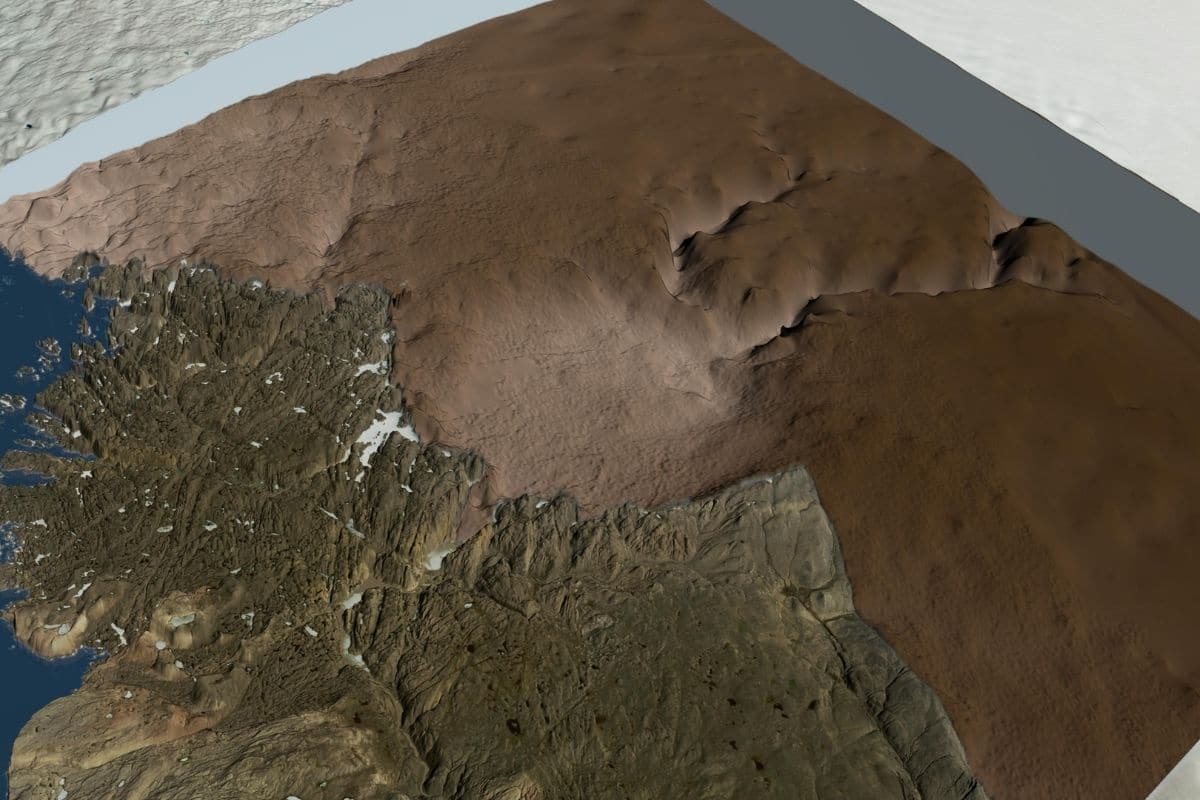
Fortunately, the crater was created long before the first humans populated the earth.
In 2015, researchers in northwestern Greenland stumbled upon a bizarrely large impact crater. The Hiawatha Crater as it was called, turned out to be no less than 31 kilometers wide – making it one of the 25 largest impact craters on Earth – and was buried under a kilometer of Greenlandic ice. Since its discovery, there has been much speculation about the age of the crater. And now we finally know for sure: luckily our distant ancestors didn’t see the meteorite that created the crater speed past.
At 31 kilometers across, Hiawatha Crater is larger than about 90 percent of some 200 known impact craters on Earth. While that’s impressive, the crater is still much smaller than the roughly 200-kilometer wide Chicxulub crater that ushered in the end of the dinosaur age.

Maps showing the location of Hiawatha Crater in northwestern Greenland (left) and the shape of the Earth’s surface beneath the ice, with the crater clearly visible (right). Image: University of Copenhagen
The study relegates some previous theories about the age of the crater to the realm of fables. Some scientists have claimed that the meteorite that gave birth to the Hiawatha Crater crashed into Earth about 13,000 years ago—indeed, when humans were already living on Earth. The crater has even been associated with the Younger Dryas; a period of cooling that lasted for more than a thousand years. But these claims were by no means certain. “Dating the crater is a very tough nut to crack,” said Michael Storey.
New analyses
In a new study, researchers decided to make another frantic attempt. For this they collected grains of sand and rocks from the Hiawatha Crater. The granules were then heated with lasers until they released argon – a colorless noble gas. The rocks were analyzed using uranium-lead dating of the mineral zircon.
true age
The study dispels all previous theories about the age of the Hiawatha Crater. And that means that this one is not a silent witness of human suffering after all. The true age is estimated at 58 million years. This created the crater a few million years after the extinction of the dinosaurs and far, far before the first humans walked the earth. “I’m confident we’ve established the crater’s true age,” said study researcher Storey. “And he is much older than many thought.”
happy
Researcher Nicolaj Krog Larsen, one of the scientists who discovered the Hiawatha crater in 2015, is also pleased that the exact age of the crater has been determined. “It’s great to know for sure how old the crater is,” he says. “We’ve been working hard to find a way to date the crater and have made multiple expeditions to the area to collect samples.”
Temperate Rainforest
Now that the crater’s new age has been determined, we also have a better understanding of what Earth looked like when the Hiawatha meteor crashed – releasing millions of times more energy than an atomic bomb. At the time, the Arctic was covered by temperate rainforest, according to the researchers. Wildlife was abundant and temperatures around 20 degrees Celsius were the norm.
Scientists suspect that the impact of the Hiawatha meteorite caused much doom and destruction and may even have an impact on the prevailing climate. However, compelling evidence that the Hiawatha impact has disrupted the global climate is still lacking. The dating of the crater does allow researchers to test different theories and better understand its impact.
Source material:
†Giant impact crater in Greenland occurred a few million years after dinosaurs went extinct– University of Copenhagen – Faculty of Science (via EurekAlert)
Image at the top of this article: NASA’s Scientific Visualization Studio via Wikimedia Commons